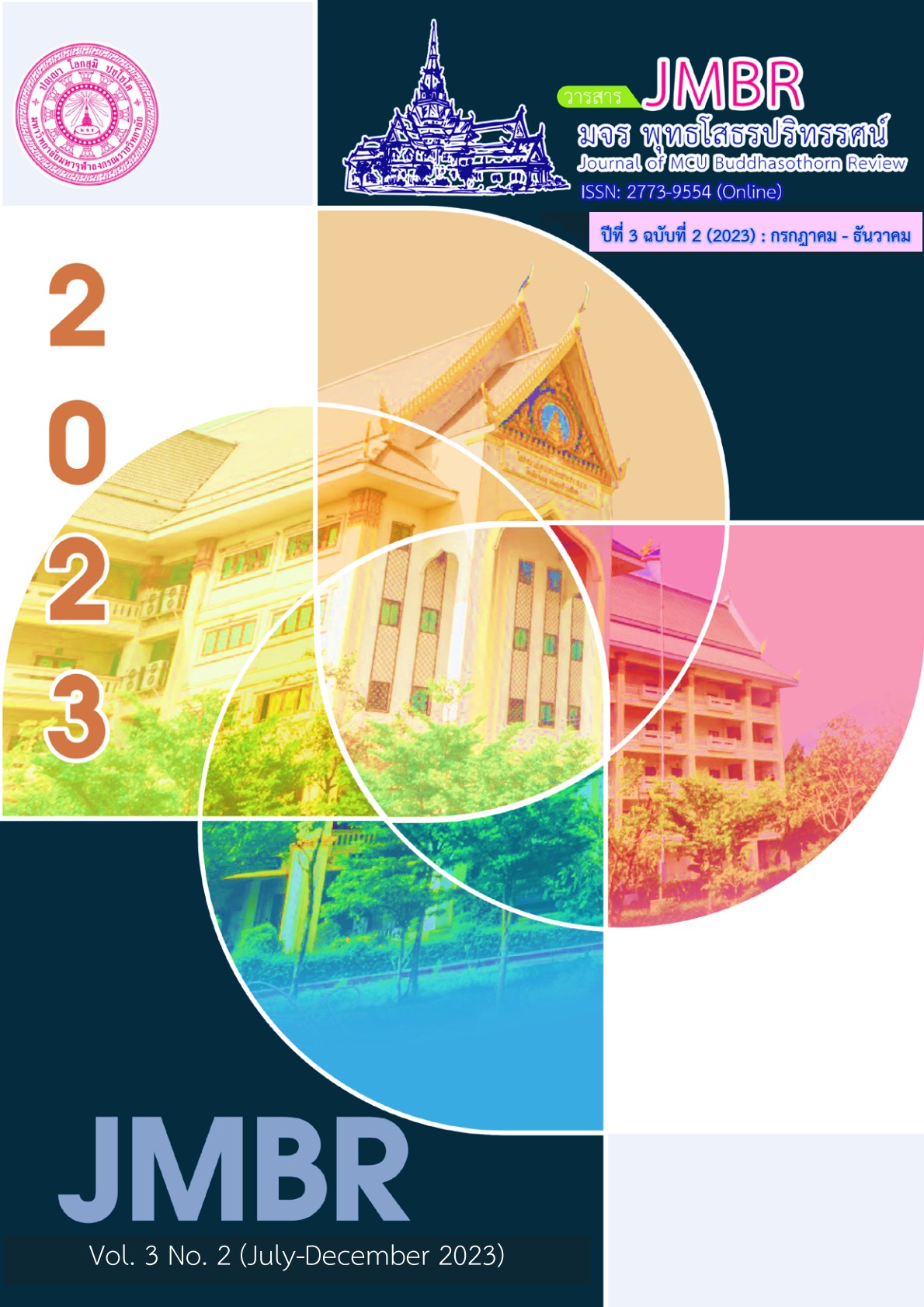Passing Away with Awareness in the Theravada Buddhist Canons: the Practices for the Happiness in the Present Time and in the Heaven
Main Article Content
Abstract
The purposes of this research study are to study passing away with awareness and the practices for peaceful deaths in the Theravada Buddhist canons and to analyze the preparations for the peaceful deaths in the canons. This study is a type of the documentary research. The data were collected from Tripitaka, Atthakatha, Tika, Pakaranavisesa and Theravada Buddhist texts. The results of the study revealed that
1. Mortality is the remembrance of death to create the awareness and mindfulness, including to Thinking, hurrying up and doing good deeds, it can give the results in reaching the highest level of enlightenment Arhatship in Buddhism, but for those who do not practice with death remembrance or are not interested in preparing for death. The symptoms of death may also result in a painful and restless death for those who have not prepared themselves.
2. With practices for preparing for a peaceful death, they should begin with the right views or the correct knowledge on the cycles of birth and death, etc., which will be the factors of conducting the charity by giving alms, observing the precepts, or not committing all sins, including the merit collection accompanied by meditation or mind training. This death would be introduced and explained to the closed people or the family members to understand its benefits and how to start practice until developing skills according to their abilities, because they understand what we practice for peaceful death with the intentions and know the skills for the peaceful death at the end of life.
Article Details

This work is licensed under a Creative Commons Attribution-NonCommercial-NoDerivatives 4.0 International License.
ต้นฉบับที่ได้รับการตีพิมพ์ในวารสาร มจร พุทธโสธรปริทรรศน์ วิทยาลัยสงฆ์พุทธโสธร มหาวิทยาลัยมหาจุฬาลงกรณราชวิทยาลัย ถือเป็นกรรมสิทธิ์ของวิทยาลัยสงฆ์พุทธโสธร มหาวิทยาลัยมหาจุฬาลงกรณราชวิทยาลัย ห้ามนำข้อความทั้งหมดหรือบางส่วนไปพิมพ์ซ้ำ เว้นเสีย แต่ว่าจะได้รับอนุญาตจากวิทยาลัยฯ เป็นลายลักษณ์อักษร และเพื่อให้เป็นไปตามกฎหมายลิขสิทธิ์ ผู้เขียนทุกท่านต้องลงลายมือชื่อในแบบฟอร์มใบมอบลิขสิทธิ์ บทความให้แก่วารสาร พร้อมกับบทความต้นฉบับที่ได้แก้ไขครั้งสุดท้าย นอกจากนี้ ผู้เขียนทุกท่านต้องยืนยันว่าบทความต้นฉบับที่ส่งมาตีพิมพ์นั้น ได้ส่งมาตีพิมพ์เฉพาะในวารสาร มจร พุทธโสธรปริทรรศน์ เพียงแห่งเดียวเท่านั้น
References
ดุษฎี สีตลวรางค์. (2532). การศึกษาในสังคมพระพุทธศาสนาตามที่ปรากฏในพระไตรปิฎก (วิทยานิพนธ์ปริญญาครุศาสตรดุษฎีบัณฑิต สาขาวิชาหลักสูตรและการสอน). บัณฑิตวิทยาลัย: จุฬาลงกรณ์มหาวิทยาลัย.
มหาจุฬาลงกรณราชวิทยาลัย. (2539). พระไตรปิฎกฉบับภาษาไทย ฉบับมหาจุฬาลงกรณราชวิทยาลัย. กรุงเทพฯ: โรงพิมพ์มหาจุฬาลงกรณราชวิทยาลัย.
พระธรรมโกศาจารย์ (ปัญญานันทภิกขุ). (2546). ธรรมะกับชีวิตประจำวัน เกิดแก่เจ็บตายเป็นธรรมดาของชีวิต. กรุงเทพมหานคร : ธรรมสภา.
พระพรหมคุณาภรณ์ (ป.อ.ปยุตฺโต). (2557). พจนานุกรมพุทธศาสตร์ ฉบับประมวลธรรม. พิมพ์ครั้งที่ 27. กรุงเทพฯ: มหาจุฬาลงกรณราชวิทยาลัย.
________. (2551). พุทธธรรม. พิมพ์ครั้งที่ 15. กรุงเทพฯ: สหธรรมิก.
พระไพศาล วิสาโล. (2552). มรณสติ. สมุทรปราการ: ชมรมกัลยาณธรรม.
พุทธทาสภิกขุ. (2551). ตายก่อนตายดับไม่มีเหลือ. กรุงเทพฯ: สถาบันบันลือธรรม.
สุชญา ศิริธัญภร และคณะ. (2548). การวิเคราะห์คัมภีร์พระพุทธศาสนาเถรวาท : ความตายกับมรณัสสติ (รายงานการวิจัย). สถาบันวิจัยพุทธศาสตร์: มหาวิทยาลัยมหาจุฬาลงกรณราชวิทยาลัย.


